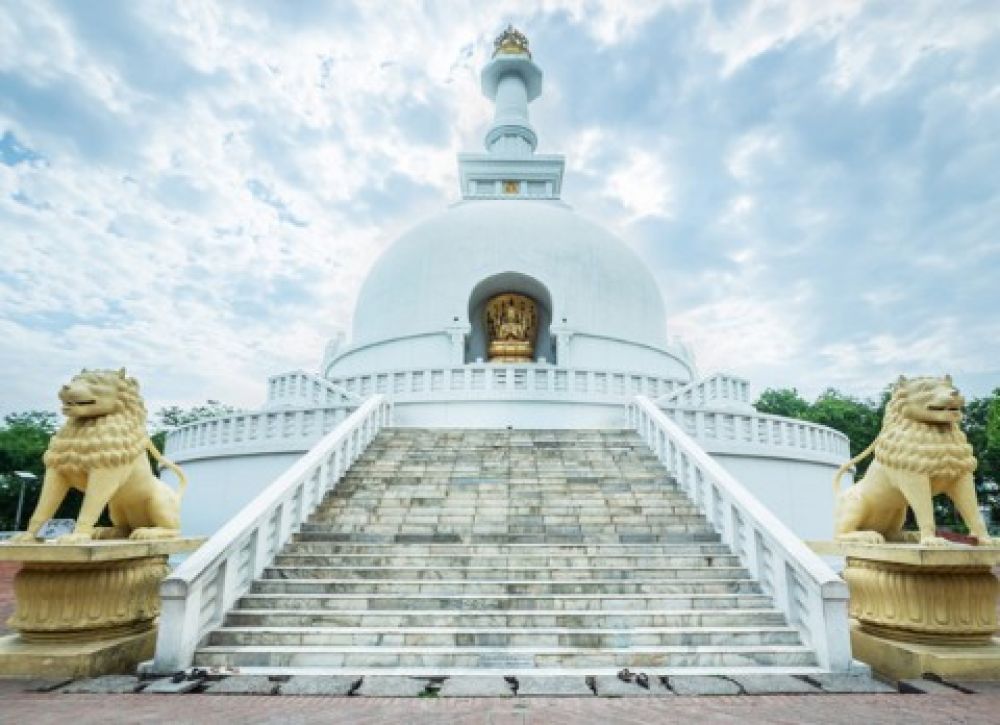

The Vishwa Shanti Stupa, also known as the Peace Pagoda, stands as a symbol of non-violence and peace in the ancient city of Rajgir, in Bihar, India. Built by the Japanese Buddhist organization Nipponzan Myohoji in collaboration with the Indian government, the stupa was completed in 1969. It's one of the 80 peace pagodas around the world that aim to inspire unity among all races and creeds.
Rajgir has a deep historical and religious significance, being associated with both Buddhism and Jainism. It was once the capital of the Magadha kingdom and is revered as a place where Lord Buddha spent considerable time meditating and preaching. The arrival of the peace pagoda augmented the town’s spiritual importance and made it a key stop for pilgrims.
The stupa is a splendid white structure sitting atop the Ratnagiri Hill, adorned with four golden statues of Buddha that represent his life phases—birth, enlightenment, teaching, and death. Visitors can climb up the stupa using a chairlift system or by the steps that meander up the hill.
Since its inception, the Vishwa Shanti Stupa has attracted tourists and Buddhist followers from across the world. The establishment of this pagoda marked a new chapter in the tourism history of Rajgir, reviving it as a prominent spiritual destination. It offers panoramic views of the surrounding valleys and the ancient remnants of Rajgir, making it a favorite for both tourists and history enthusiasts.
In recent years, mindful and experiential travel have become significant trends. Tourists are increasingly seeking destinations that offer a sense of tranquility and opportunities for reflection. The Vishwa Shanti Stupa perfectly aligns with this trend, attracting visitors looking for peace and spiritual insight.
Moreover, the Bihar government has taken initiatives to improve infrastructure and facilities to make Rajgir more accessible. The development of the Rajgir International Convention Centre (RICC) aims to promote both tourism and international conferences, which in turn will increase the footfall to the beautiful Vishwa Shanti Stupa.
Visitors to the stupa can also explore other historical sites in Rajgir such as the Venu Vana, the Japanese Temple, and the hot springs. The best time to visit is during the cooler months from October to March. The annual Rajgir Mahotsav (festival), usually held in December, is a celebration of traditional arts, crafts, and cultural performances, and is an ideal time for tourists to experience the wealth of Rajgir's heritage.
Overall, the Vishwa Shanti Stupa is not just a monument but also a testament to the universal message of peace and spirituality. Its unique charm continues to captivate the hearts of travelers and endures as a significant historical and cultural site in India's rich tourism tapestry.